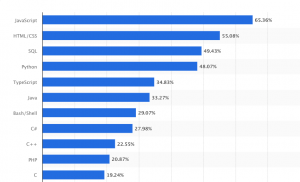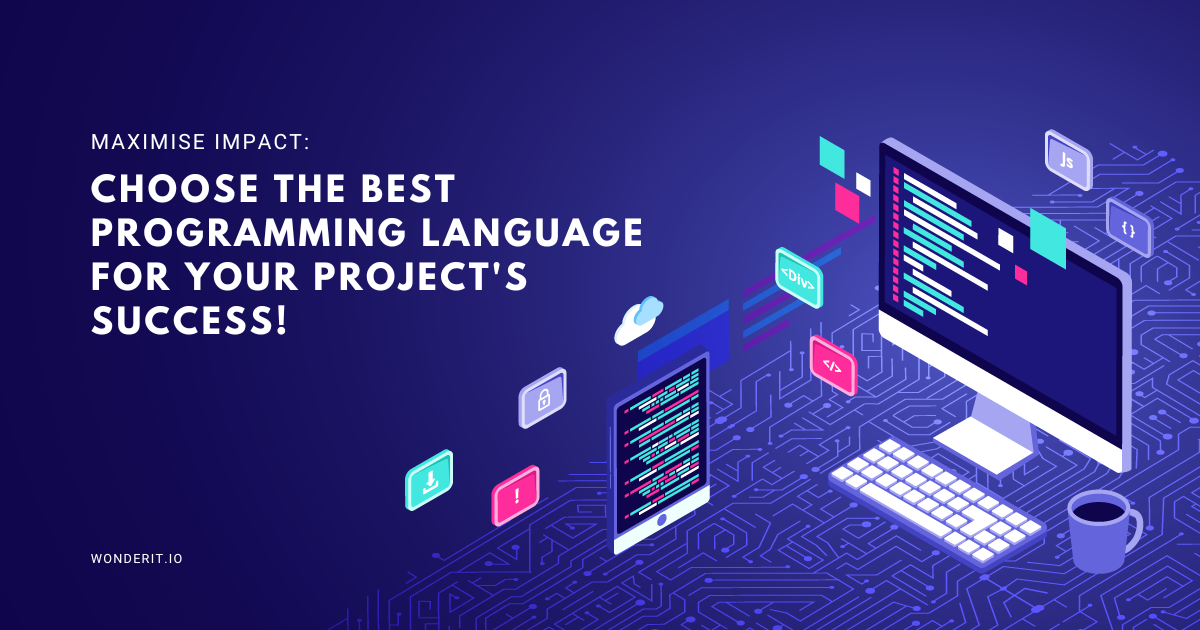Are you struggling to choose the right programming language for your project? Read this guide to learn how to select the best language for maximum impact and success.
Introduction
Programming languages are the backbone of any software project. Choosing the right programming language can make or break the success of your project. With so many languages available, it can be overwhelming to decide which one to choose. This guide will help you understand the importance of choosing the right programming language and provide you with the tools and knowledge you need to select the best language for maximum impact and success.
Why is Choosing the Right Programming Language Important?
Choosing the right programming language is crucial to the success of your project. Here’s why:
- Performance: Different languages have different performance characteristics. Choosing the right language can significantly impact the performance of your project.
- Compatibility: Some languages are more compatible with certain operating systems, hardware, or libraries than others. Choosing the right language ensures compatibility and avoids unnecessary compatibility issues.
- Maintainability: The language you choose can impact how easy it is to maintain your codebase. Some languages are easier to read and understand than others, making it easier to fix bugs and add new features.
- Community Support: The size and activity of a programming language’s community can affect how quickly bugs are fixed and how easy it is to find support.
- Time and Cost: Choosing the wrong language can result in wasted time and money. Rebuilding your project in a different language can be costly and time-consuming.
Factors to Consider when Choosing a Programming Language
When choosing a programming language, there are several factors to consider:
Project Requirements
Your project requirements should be the primary factor when choosing a programming language. Ask yourself:
- What is the project’s purpose?
- What are the project’s technical requirements?
- What platforms and operating systems does the project need to run on?
Once you have a clear understanding of your project requirements, you can narrow down your language choices.
Performance Requirements
If performance is a critical factor for your project, you need to choose a language that can deliver the required performance. Some languages are optimised for specific tasks, such as web development, data analysis, or game development. Consider the following when evaluating a language’s performance:
- Processing speed
- Memory usage
- Resource allocation
- Parallel processing capabilities
Community Support
The size and activity of a programming language’s community can affect how quickly bugs are fixed and how easy it is to find support. Consider the following when evaluating a language’s community support:
- Active forums and user groups
- Open-source libraries and frameworks
- Active development and bug fixing
- The language’s popularity and adoption rate
Learning Curve
The learning curve is the time and effort required to become proficient in a programming language. If the development team is already familiar with a particular language, it may be more efficient to choose that language. Consider the following when evaluating a language’s learning curve:
- Syntax and structure
- Complexity
- Tooling and documentation
Development Environment
The development environment is the tools and software used to write, test, and deploy code. Some languages have more extensive development environments than others. Consider the following when evaluating a language’s development environment:
- IDEs and code editors
- Debugging and testing tools
- Integration with other tools and systems
- Deployment options
Best programming languages
What programming language is best for web development?
There are several programming languages used in web development, but the most popular ones are:
- HTML/CSS: Used for structuring and styling web pages
- JavaScript: Used for client-side scripting and interactivity
- PHP: Used for server-side scripting and dynamic web pages
- Python: Used for web application development.
What programming language is best for mobile development?
Mobile app development requires a programming language that can handle the unique challenges of developing apps for mobile devices. Here are some popular languages for mobile app development:
- Java: Is a popular programming language for developing Android apps. It has a large community of developers and offers features such as garbage collection, multithreading, and exception handling, making it ideal for developing complex mobile apps.
- Swift: Is the primary programming language used for developing iOS apps. It offers advanced features such as automatic reference counting, closures, and generics, making it a fast and safe language for mobile app development.
- JavaScript: Is a versatile language that is used for developing hybrid mobile apps that work on both iOS and Android platforms. It is a popular language for building web-based mobile apps using frameworks such as React Native and Ionic.
- C#: Is a popular language for developing mobile apps on the Xamarin platform. It is an object-oriented language that offers features such as garbage collection, automatic memory management, and type safety.
- Kotlin: Kotlin is a modern programming language that is gaining popularity for developing Android apps. It offers a concise syntax, null safety, and type inference, making it easier to read and write code.
What programming language is best for game development?
Game development requires a high-performance language capable of handling complex graphics and physics. Some popular programming languages for game development are:
- C++: Used for developing AAA games and game engines
- C#: Used for developing games with Unity game engine
- Java: Used for developing mobile games for Android platform
- Python: Used for developing casual and 2D games.
What programming language is best for data analysis?
Data analysis requires a language that can handle large amounts of data and perform complex computations. Some popular languages for data analysis are:
Python: Used for data cleaning, transformation, and visualisation
R: Used for statistical analysis and data visualisation
SQL: Used for querying and managing relational databases.
The Most Popular Programming Languages Among Software Developers in 2022
According to Statista’s data from 2022, JavaScript and HTML/CSS were the most frequently used programming languages by software developers globally. More than 65 percent of respondents claimed to use JavaScript, while slightly over 55 percent reported using HTML/CSS. Python, SQL, and TypeScript completed the top five most popular programming languages worldwide.

Most widely used programming languages among developers worldwide 2022
You might also like: Cool Things You can Build with Javascript
Conclusion
Choosing the right language is crucial to the success of any software project. Understanding your project requirements, performance needs, community support, learning curve, and development environment are all important factors to consider when selecting a language. By evaluating these factors and choosing the best language for your project, you can ensure maximum impact and success. Whether you’re developing a web or mobile app, creating a game, or performing data analysis, there is a language that is perfect for your needs.
At WonderIT, we offer multiple development services in a variety of programming languages to ensure that your project is a success. Contact us today to learn more about how we can help bring your project to life!


Recent Comments